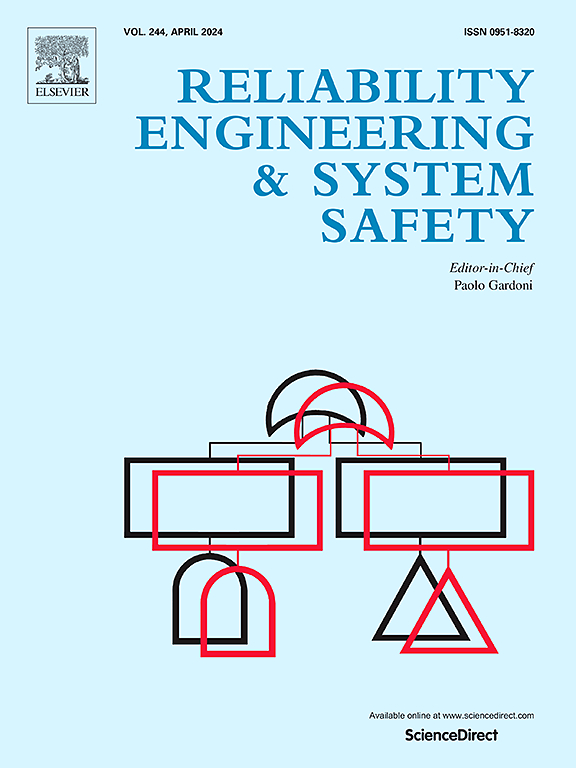An algorithm to search for multi-state minimal cuts in multi-state flow networks containing state heterogeneous components
IF 9.4
1区 工程技术
Q1 ENGINEERING, INDUSTRIAL
引用次数: 0
Abstract
The reliability and resilience of multi-state flow networks (MFNs) are crucial for the safe operation of complex network systems, with the multi-state minimal cut (d-MC) method being fundamental for evaluating these metrics. Existing research mainly focuses on d-MC in MFNs with state weakly homogeneous components (SWHCs), where the state space consists of continuously increasing integers. However, real-world MFNs often include state heterogeneous components (SHCs). This study presents an algorithm to search for all multi-state minimal cuts (d-MC*) in MFNs with SHCs. The algorithm first defines d-MC* and its generation model, along with two methods to reduce candidates. A definition-based verification method for d-MC* candidates is also proposed. Then, a comprehensive comparison is conducted with existing approaches through both theoretical analysis and numerical experiments, illustrating the significant advantages of the new algorithm in terms of accuracy and efficiency for processing MFNs containing SHCs. Additionally, the selection of the optimal max-flow algorithm among three popular choices is analyzed. Finally, the practicality of the proposed d-MC* algorithm is demonstrated on a real-world network. This study fills the gap in existing research on MFNs containing SHCs and provides important theoretical support and guidance for the design, operation, and maintenance of network systems.
求助全文
约1分钟内获得全文
求助全文
来源期刊

Reliability Engineering & System Safety
管理科学-工程:工业
CiteScore
15.20
自引率
39.50%
发文量
621
审稿时长
67 days
期刊介绍:
Elsevier publishes Reliability Engineering & System Safety in association with the European Safety and Reliability Association and the Safety Engineering and Risk Analysis Division. The international journal is devoted to developing and applying methods to enhance the safety and reliability of complex technological systems, like nuclear power plants, chemical plants, hazardous waste facilities, space systems, offshore and maritime systems, transportation systems, constructed infrastructure, and manufacturing plants. The journal normally publishes only articles that involve the analysis of substantive problems related to the reliability of complex systems or present techniques and/or theoretical results that have a discernable relationship to the solution of such problems. An important aim is to balance academic material and practical applications.
 求助内容:
求助内容: 应助结果提醒方式:
应助结果提醒方式:


